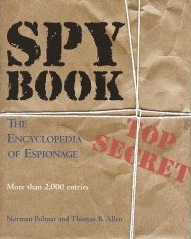
How to Restore Spies Credbility: Go Open Source
- By Noah Shachtman
- December 14, 2007
In the mid ’90s, Robert Steele, a former-CIA officer and early proponent of open source intelligence, testified before the Aspin-Brown Commission about the tremendous value of unclassified information. The Commission decided to put this open source intelligence, or “OSINT,” to the test and directed that Steele and his network of commercial intelligence contacts would go head-to-head against the secret intelligence community in a battle-of-the-INTs. The subject would be the tiny and generally dismal nation of Burundi. The battle was engaged at 17:00 on a Thursday and the delivery deadline was 10:00 the next Monday.
On Monday morning Steele showed up with:
- The names of the top 10 journalists covering Burundi (ripe for debriefing)
- The names of the top 10 academics covering Burundi (ripe for debriefing)
- 20 two-page executive-level political-military summaries on Burundi
- Burundi order-of-battle information down to the tribal level.
- 1:50 maps of the country
- 1:50 cloud-free imagery of the country that was less than 3 years old.
The CIA showed up with a PowerPoint chart of nominal value and a regional – not country-specific – economic study. You could pretty much conduct a non-combat operation in Burundi with Steele’s info; you wouldn’t send your worst enemy to Burundi based on what the CIA provided.
The Congressional Research Service’s recent report on open source intelligence reminds us that the point Steele made eleven years ago remains valid today: the value of any given piece of information is found in its utility, not in how it was obtained.
Stolen information is useless if it doesn’t answer any questions or in the case of the Burundi exercise, cannot be obtained period.
Additionally, while secrets always come with baggage (is the source lying to you? does the source even know what he’s talking about? is the information old? is this a trick?) OSINT can be fact-checked in real-time by multiple sources.
(No wonder the Department of Homeland Security seems so interested in it.) All the unwanted attention showered on the recent intelligence estimate on Iran’s nuclear weapons capabilities focused on the IC’s analysis of mostly secret information, but I would argue that it is collection or the lack thereof that is at the root of most intelligence problems. The CRS report conveniently if inadvertently points out a potential solution to both problems:
The ultimate metric for the Intelligence Community is, however, the quality of analysis. Today’s analysts work with the awareness that products reflecting ignorance of information contained in open sources will discredit the entire intelligence effort. This will be especially the case when intelligence products are made public and are scrutinized by knowledgeable outside experts.
I think it is high time we repeated the Burundi experiment (perhaps take a close look at someplace relevant like Pakistan). See how substantial (as opposed to ideological) the critiques from the world’s foremost experts are, and figure out if charges of “politicization” are accurate or if more fundamental flaws need to be addressed.
– Michael Tanji, cross-posted at Haft of the Spear



